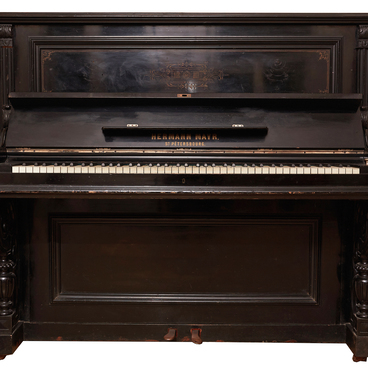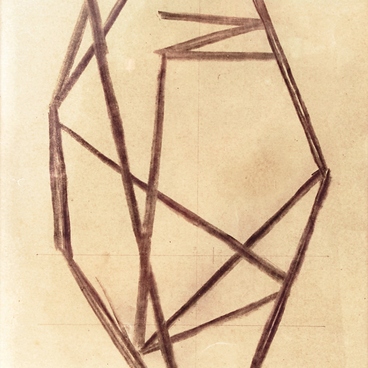Among Mikhail Matyushin’s personal belongings is his plywood palette for working with oil paints. Such palettes were usually treated with boiling oil or hot wax or covered with varnish so that they would not absorb oil from the paints.
It was important to keep wooden palettes clean by removing paints immediately after finishing. Laying too much paint was not wise, because it might dry up quicker than expected.
Together with the palette, the Museum of Saint Petersburg Avant-garde also keeps Mikhail Matyushin’s brushes: a big flat one with light-colored hog bristle and two smaller flat ones — a squirrel-hair brush and a kolinsky sable brush. A high-quality brush is distinguished by each hair having a natural unedged end to prevent uneven distribution of the paint and guarantee the decisive manner of painting and smooth transitions between hues.
A flat shape of a brush, as opposed to a round one, allows for bolder brush strokes with distinct borders. A kolinsky sable brush is the best soft brush when it comes to elasticity. The most expressive texture effects can be achieved with a flat bristle brush in combination with quick-drying tempera paint. This was why Matyushin preferred to use this paint in many of his works.
In his autobiography, Mikhail Matyushin described how during his fascination with Impressionism he felt that oil painting techniques clashed with his manner of painting,

